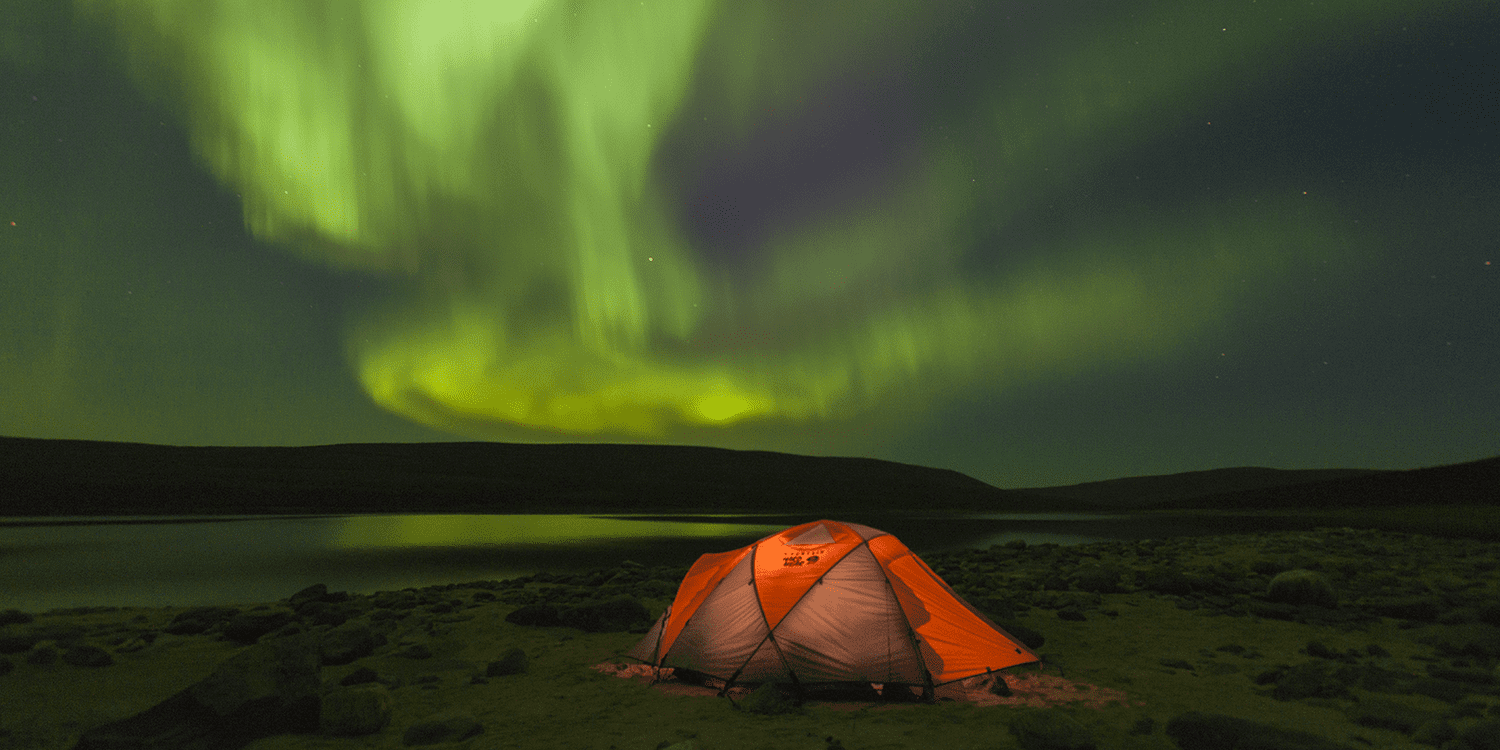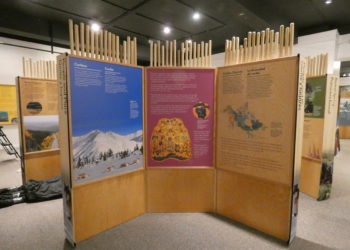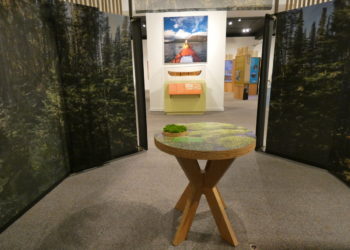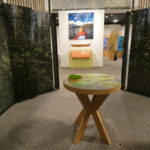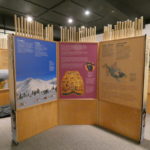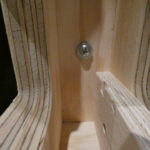Carol Bossert, Ph.D. Program Manager for Science, Smithsonian Institution Traveling Exhibition Service and Smithsonian Affiliations (SITES/SA) explains how the development of the Knowing Nature: Stories of the Boreal Forest travelling exhibition integrated principles of sustainable development in its thematic focus as much as in its design planning that are in line with the Smithsonian Institution’s sustainability framework.
The boreal forest, climate change, and conservation
Knowing Nature is a 250 sqm travelling exhibition that began its North American tour in the United States in April 2023. The exhibition includes commissioned objects from Indigenous artisans, photography, interactives, and video interviews with Indigenous Elders, conservationists and scientists involved in understanding and protecting the boreal forest.
The boreal forest is Earth’s largest terrestrial ecosystem and the last intact forest in the world. From space, it looks like a sparkling halo of evergreens and waterways that wraps Earth’s northern latitudes and extends from Europe across Siberia, and from Alaska across Canada. The boreal forest encompasses nearly a third of the planet’s trees and stores two to three times as much carbon as tropical forests. It is an essential breeding ground for billions of migratory songbirds and waterfowl and home to the last great herds of barren-ground caribou as well as top predators, including wolves and grizzlies. The boreal forest is a valuable source of fresh water and by its sheer scale, it is a powerful factor in global climate. While seemingly remote to many, its health is one of the most important factors in determining what our sustainable future looks like.
With this exhibition, our specific goals were to:
- Raise awareness about the boreal forest and its value to our planet
- Give voice to the people who live and work in the boreal, specifically Indigenous communities
- Use the exhibition as a platform to engage audiences in discussions about climate change and sustainability
The exhibition takes audiences on a learning journey that begins with curiosity, builds empathy and leads to action. It reveals the beauty and grandeur of the boreal forest, using evocative imagery of landscapes and nature. A voice is given to the boreal through the words of Indigenous community members, scientists, conservationists, artists and writers. It is designed to appeal to different learning styles and audiences with a variety of interpretive approaches.
Sustainability goals
In designing the exhibition, we wanted to create an aesthetic that emphasised the beauty of natural materials and adopt principles of sustainable design. We were aided in this regard by the Sustainable Smithsonian Team, a multi-year collaboration between Cornell University’s Sustainable Design project team and the Smithsonian. In past years this group had helped launch Smithsonian’s sustainability dashboard, a tool that tracks progress in sustainable development actions across the entire institution. This resource monitors in particular specific initiatives related to the use of plastics and recycling opportunities. It notably includes an analysis and action plan for materials used in conservation, and a comprehensive review of contracts for waste management and disposals.
Since fall 2022, a new sub team has been investigating concrete sustainable development objectives for travelling exhibitions to help direct the efforts of the Knowing Nature design team. At the end of 2022, the team provided a report that detailed benchmarks and opportunities to continue making SITES travelling exhibitions more sustainable with three key areas of focus: material choice, recycling and shipping.
Reviewing these objectives against the realities of rising labour costs, supply chain issues and a tight schedule, the design team decided to focus on these key objectives:
- Reduce Smithsonian’s plastic pollution by reducing drastically the use of PVC products that are commonly used in travelling exhibitions because of their durability and light weight, particularly for structural elements, graphics and vinyl lettering.
- Eliminate the use of materials, chemicals and elements found on the Living Building Challenge (LBC) ’s Red List.
- Employ, whenever possible, construction and production methods that would allow for exhibition elements to be reused, repurposed or recycled.
- And, most importantly for an exhibition that promoted a forest conservation message, use only wood and wood products that were FSC Certified.
A complex and continuous process
The Sustainable Smithsonian Team tracked the decision-making process as the project moved into fabrication to assess the implementation of our objectives. The review concluded that materials used in Knowing Nature, with the team’s particular attention to certification, were a significant step forward in integrating sustainability into fabrication.
While the team was successful in designing an exhibition that aligned well with our sustainable objectives, our team was confronted to some areas of development where it was not as easy to find a perfect answer. For example, all fabric materials had to be treated with a fire retardant to meet Fire and Life Safety codes. Also, removing all plastics proved difficult, as we had to keep some acrylic vitrines to protect objects, and use protective sealant on direct-print graphics, as well as polyester banner fabrics.
Knowing Nature has been a laboratory for our team and the Sustainable Smithsonian Team to continue to explore and set up sustainable objectives and practices in the making of our travelling exhibitions, both in thematic and in design developments. From that experience, we will continue, in close collaboration with the Sustainable Smithsonian Team, to develop sustainable development practice and progressively improve and communicate about impact.
Special thanks to the project designers from Smithsonian Institution Exhibits, to the project fabricator Explus Inc. and to the Cornell University Sustainable Design Team.
Knowing Nature is currently on tour through August 2027. Our team can be contacted through the SITES page on the Teo platform or at bossertc@si.edu.
Special terms used in this article
VOC – Volatile Organic Compounds that impact indoor air quality
Red List – The Living Building Challenge (LBC) Red list represents the “worst in class’ materials known to pose serious health risks to humans and ecosystems The Red List – International Living Future Institute (living-future.org)
FSC-Certified – A certification program of the Forest Stewardship Council, an independent non-profit organisation that promotes environmentally sound, socially beneficial and economically prosperous management of the world’s forests
PVC – Polyvinyl chloride, the most widely produced plastic material
Exhibition mentioned
Knowing Nature: Stories of the Boreal Forest, by Smithsonian Institution Traveling Exhibition Service

